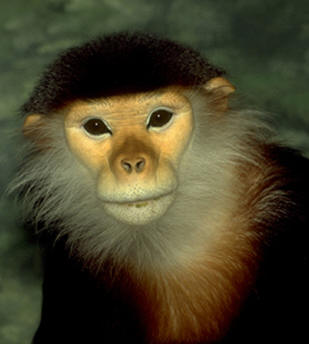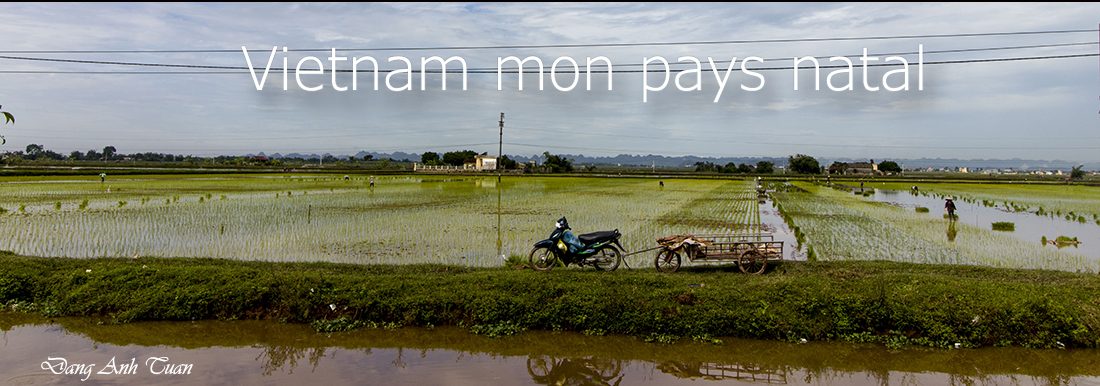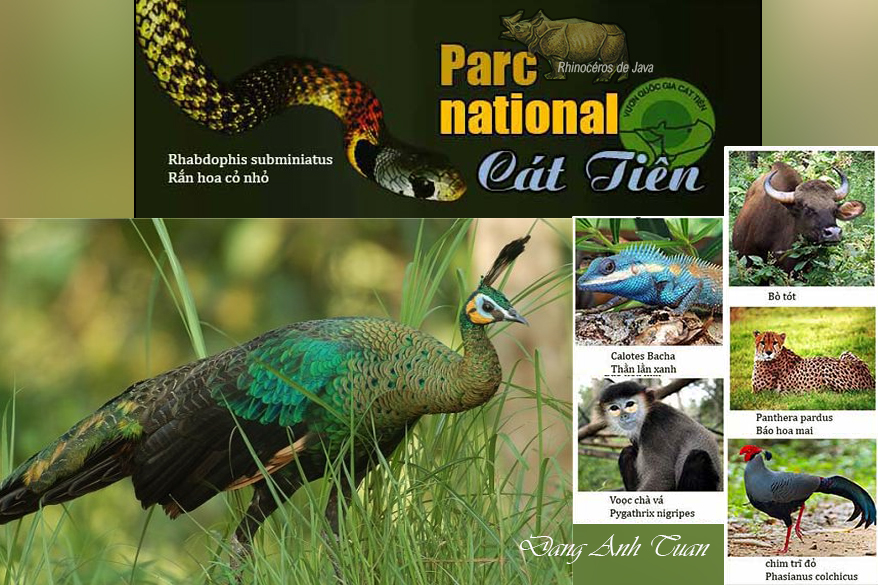Mặc dù vườn quốc gia Cát Tiên được công nhận là khu dự trữ sinh quyển thế giới vào tháng mười một năm 2001 bởi cơ quan UNESCO và con tê giác Java được chọn làm biểu tượng cho vườn, các cơ quan chức năng Việt Nam không cứu được con tê giác cuối cùng bị một kẻ săn trộm bắn chết vào năm 2010. Điều này cho thấy việc bảo vệ công viên này rất khẩn cấp. Đây là khu rừng đất thấp cuối cùng ở Việt Nam có được sự đa dạng sinh học đáng chú ý. Sự mong manh của khu vườn nầy phần lớn là do nạn phá rừng kịch liệt có liên quan đến việc sử dụng chất làm rụng lá hóa học (chất da cam) trong những năm chiến tranh và sự phát triển kinh tế mà Việt Nam cần có sau khi thống nhất đất nước. Được tăng trưởng từ 48 triệu dân năm 1975 lên đến 96 triệu năm 2020, Việt Nam trở thành một trong những quốc gia đông dân nhất ở Đông Nam Á.
Mặc dù chính phủ cố gắng phục hồi rừng nhưng cũng không đủ để cứu các rừng thiên nhiên, đặc biệt là vườn quốc gia Cát Tiên. Trước hết, lợi ích quốc gia không tạo được tiếng vang thuận lợi trong cộng đồng dân cư địa phương vì họ tiếp tục sử dụng gỗ rừng làm vật liệu xây dựng nhà cửa và làm giảm bớt đi diện tích rừng bằng cách chuyển đổi những khu rừng nầy thành khu trồng cà phê và hạt điều, chưa kể đến sự suy thoái thông thường thấy với việc đốt rừng làm rẫy của các đồng bào thiểu số. Việc trồng lại rừng cũng không ngăn chặn được tổng diện tích rừng nguyên sinh nó giảm lần từ 3840 kilômét vuông xuống còn 800 kilômét vuông.
Ngoài ra, chúng ta hay thường hủy họai thiên nhiên vì chúng ta không biết rằng nó rất cần thiết cho cuộc sống và sức khỏe. Việc giết một con bò tót sống gần đây ở Công viên Cát Tiên vào tháng 10 năm 2012 là một bằng chứng việc làm sai trái của con người do sự nghèo đói và thiếu hiểu biết. Con người cần có thiên nhiên nhất là con người chỉ là một phần nhỏ bé của thiên nhiên. Con người cần quan tâm sống hài hoà với thiên nhiên bởi vì nên biết rằng việc duy trì đa dạng sinh học là điều rất cần thiết cho loài người.
Theo nhà sinh vật học người Pháp Gilles Bœuf, 50% các phân tử hoạt động được sử dụng trong dược phẩm đến từ các sản phẩm tự nhiên hoặc thực vật. Rừng nhiệt đới Cát Tiên là một hệ sinh thái phức tạp mà sự cân bằng rất mong manh vì có một khu định cư trong vườn này. Ngoài ra, dự án xây dựng hai đập thủy lực ở thượng nguồn hồ cá sấu trên sông Đồng Nai có thể làm phá vỡ sự cân bằng này và có ảnh hưởng đến toàn bộ hệ sinh thái vì thực vật và động vật phụ thuộc vào nhau. Sự đòi hỏi kiên định các không gian sống và tài nguyên tạo thành một mối đe dọa ngày càng tăng và một áp lực mạnh mẽ lên hệ thực và động vật của công viên. Rất khó để tìm ra được sự cân bằng thích hợp cho môi trường và cho sự phát triển kinh tế.
Nhưng rất cần có sự quan tâm của chúng ta trong việc bảo vệ công viên Cát Tiên này vì nơi đây có hơn 1.610 loài thực vật, trong đó có 38 loài có tên trong Sách Đỏ, có hơn 350 loài chim (làm tổ hoặc di cư), 120 loài bò sát và các động vật lưỡng cư, 105 động vật có vú. Chúng ta có thể trích dẫn ví dụ như con báo mây, con bò tót, con gấu đen, con công xanh, loài rắn có con mắt hồng ngọc, vượn má vàng vân vân….
Nhãn hiệu bảo vệ mà cơ quan UNESCO ban cấp không có xa lạ với s ự mong muốn duy trì mãi mãi công viên này và khu rừng nhiệt đới của nó và khuyến khích chúng ta nên bảo tồn viên ngọc quý của thiên nhiên bằng mọi giá cho các thế hệ mai sau.
© Đặng Anh Tuấn
Malgré l’effort de reconnaître le parc national Cát Tiên comme la réserve de biosphère en novembre 2001 par l’UNESCO et le choix du rhinocéros de Java comme emblème du parc, les autorités vietnamiennes ne réussissent pas à sauvegarder le rhinocéros dont le dernier spécimen a été abattu par un braconnier en 2010. Cela montre à tel point qu’il est urgent de protéger ce parc. Celui-ci est la dernière forêt de plaine du Vietnam où il y a une biodiversité remarquable. La fragilité de cette forêt est due en grande partie à la déforestation massive liée à l’emploi des défoliants chimiques (agent orange) utilisés durant les années de guerre et aux développements économiques dont le Vietnam a besoin après sa réunification. On est passé de 48 millions d’habitants en 1975 à 97 millions environ en 2020. Le Vietnam devient l’un des pays les plus peuplés en Asie du Sud Est.
Malgré l’effort gouvernemental engagé dans sa politique de reboisement, cela ne suffit pas de sauver les forêts naturelles du Vietnam, en particulier celle du parc national Cát Tiên. D’abord, l’intérêt national ne trouve pas un écho favorable dans la population locale car celle-ci continue à utiliser le bois de la forêt comme matériau de construction et à grignoter les zones forestières en les transformant en plantations de caféier et d’anacardier sans parler de la dégradation provoquée habituellement par l’agriculture itinérante sur brûlis pratiquée par les minorités ethniques. Puis le reboisement ne permet pas de stopper la superficie totale des forêts primaires qui est passée de 3840 km2 à 800km2 seulement. De plus, on est habitué à gâcher la nature car on ne sait pas que celle-ci est indispensable à la vie et à la santé. Le fait de tuer récemment un gaur vivant dans le parc Cát Tiên en octobre de l’année 2012 témoigne de ce méfait humain dû en grande partie à la pauvreté et à l’ignorance. L’homme a besoin de cette nature dont il n’est qu’un fragment. Il a intérêt de vivre en symbiose avec elle car il faut savoir que le maintien de la biodiversité est capital pour l’espèce humaine. Selon le biologiste français Gilles Bœuf, 50% des molécules actives utilisées en pharmacie proviennent des produits naturels ou des plantes. La forêt tropicale de Cát Tiên est un écosystème complexe dont l’équilibre est très fragile du fait qu’une zone d’habitation se trouve dans ce parc. De plus, le projet de réalisation de deux barrages hydrauliques en amont du lac des crocodiles sur le fleuve de Đồng Nai pourrait rompre cet équilibre et atteindre l’écosystème tout entier car les plantes et les animaux dépendent les uns des autres.
La sollicitation constante des espaces vitaux et des ressources constitue une menace grandissante et une forte pression sur la faune et la flore du parc. Il est difficile de chercher un juste équilibre pour l’environnement et pour les développements économiques. Mais il est dans notre intérêt de protéger ce parc Cát Tiên car c’est ici qu’on recense plus de 1.610 espèces végétales dont 38 inscrites dans le Livre Rouge, plus de 350 espèces d’oiseaux (nicheuses ou migratrices), 120 de reptiles et d’amphibiens, 105 de mammifères. On peut citer par exemple la panthère nébuleuse, le gaur, l’ours à collier, le paon spicifère (ou paon vert), la vipère aux yeux de rubis, le gibbon à joues jaunes etc … Le label de protection octroyé par l’UNESCO n’est pas étranger à sa volonté de vouloir pérenniser ce parc et sa forêt tropicale et de nous inciter à préserver à tout prix le joyau de la nature pour les générations futures.
In spite of the governemental effort for recognizing the national park Cát Tiên as the Biosphere Reserve in november 2001 by UNESCO and choosing Javan rhino as emblem of the park, Vietnamese authorities are not successful in protecting the rhino, the last specimen of which has been slaughtered by an poacher in 2010. It shows how urgent it is to protect this park. The latter is the last lowland forest of Vietnam where one finds a remarkable biodiversity. The weakness of this forest is caused largely by the massive deforestation (agent orange) related to the use of chemical defoliants during the years of war and economic developments required since the reunification of Vietnam. We have gone from 48 millions inhabitants in 1975 to 90 millions in 2010. Vietnam becomes the one of the most populous countries in Southeast Asia.
Despite the government effort used in his reforestation policy, that it is not enough to save natural forests of Vietnam, in particular that of Cát Tiên national park. Firstly, the national interest does not receive a favourable echo with the local people because the latter continues to use wood from the forest as a construction material and snacks forest areas by trasforming it in coffee and cashew plantations without evoking the degradation caused usually by the itinerant slash and burn agriculture of ethnic minorities. The reboisement cannot be successful in stopping the reduction of the total area of primary forests (from 3840 km2 to 800 km2). Moreover, one is accustomed to ruine the nature because one does not known that is essential for life and health. Recently, killing a gaur living Cát Tiên park in October 2012 testifies to this human mischief related largely to poverty and ignorance. Man needs this nature of which he is only a fragment. He is interested to live in symbiosis with her because one must known that the conservation of biodiversity is crucial for the human race. According to French biologist Gilles Bœuf, 50% active molecules used in pharmacies are collected from natural products and plants. The tropical forest Cát Tiên is a complex ecosystem, the balance of which is very fragile because one finds a living area in this park. In addition,the proposed realization of two hydraulic dams just upstream of crocodiles lake on Đồng Nai River, could break this balance and damage the entire ecosystem because plants and animals are dependent on one another. 
The constant solicitation of living spaces and resources constitutes a growing threat and high pressure on wildlife and flora in the park. It is difficult to find a just balance for environment and economic developments. But it is in our interest to protect this park Cát Tiên because one identifies more 1610 plant species 38 of which are registered in the Red Book,more than 350 species of birds (nesting or migratory species), 120 reptiles and amphibians, 105 mammals. One can mention for example the clouded leopard, the gaur, the black bear, the green peacock, the viper with ruby eyes, the gibbon with yellow cheeks etc…. The label protection given by UNESCO is linked to its determination to sustain this park and its tropical forest and encourages us to preserve at all costs the nature jewel for future generations.


